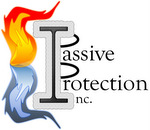Passing Building and Fire Codes:
Fireproofing has been used in construction related industries for decades. From design and build phases through daily operation, these products play an important role in achieving successful fire code approvals, enabling a wide variety of materials to be utilized in builds, meeting LEED initiatives, and maintaining personnel and public safety.
Common Problem Areas:
- Cementitious replacement, repair and patching
- Achieving fire rating following asbestos-abatement
- Designing 1- or 2-hour separation wall, floor, ceiling assemblies
- Upgrading the fire rating in existing building
- Engineered lumber (Truss, Joist, I-Beam (Open & OSB web)) – insurance and fire liability
- Exposed floor/ceilings
- Any wood, steel, or concrete that must be fire rated
Each of these scenarios are difficult problems to solve; however, new developments (and time-tested traditional methods) in fireproofing deliver great success and beautiful results.
Non-fireproofing solutions are messy, expensive, time-intensive, and either unsuccessful or short-term fixes…
- Install drywall and/or mineral wool
- Demo/Rebuild
- Install Active Fire Prevention Systems
Passive Protection, Inc. solutions:
- 1-hour, 2-hour, or Class A fire ratings- UL & accredited lab test designs
- Cementitious or gypsum fireproofing
- Formally recognized Flame Certificates/Affidavits
- ICC-certified application, inspection, and results
- Non-toxic and eco-friendly
- Quick and clean application
- Aesthetically-pleasing finish
- Long-lasting durability
- Load and space reduction
- Cost and time savings
- Address difficult existing materials, limited-access spaces, occupied and operational locations…
Fireproofing has seen an enormous amount of R&D effort over the last decade. Environmental and health concerns, stricter building and fire codes, detrimental interactions with other materials (i.e. metal hangers), etc. forced manufacturers to formulate products which excelled in their performance while being cognizant of the negative effects of their legacy products. The result is a broad range of products that, when applied and maintained properly, provide exceptional performance in any setting.
When utilizing these products, Passive Protection considers multiple factors (outside of the chemistry) in designing a truly comprehensive solution:
Direct Factors Setting: Interior, exterior, exposure to elements, wear and tear, ambient humidity, temperature fluctuations, sunlight Stage of construction: Foundation, framing and sheathing, finish and trim, FF&E Materials: Lumber, finish, steel, concrete, textiles, structural, sheathing, dimensional lumber, timbers, finish work, insulation Potential raw options: Untreated lumber or sheathing, specified wood species, non-IFR textiles, sustainable or recycled products Maintenance requirements: Routinely maintained, unmaintained, retreatment cycles, normal cleaning, industrial cleaning Rating requirements: Class A/B/C, hourly-rated assembly, (non)sprinklered, accessible or confined space Method: Surface applied, integrated in manufacturing process, pressure-treated Indirect Factors Toxicity: Special handling, dust or off-gassing ventilation, carcinogens, adverse health effects Disposal: Regular rubbish, hazardous waste removal, recyclable, landfill, incinerate Environmental: Eco-friendly, persistent organic pollutants, landfill leaching, incineration fumes, “downcycling” LEED and Green Building: Earned credits, VOC content, renewable, recyclable, sustainable Fireproofing and flame retardant treatments are only of value if they save time and/or money. These benefits are realized at many stages (design through operation), substrates range from rough lumber through delicate textile finishes, products may be transparent, colored or opaque – the combinations are difficult to summarize. As a quick reference, click for a summary of materials to which fireproofing applications: CSI Divisions 06 – Wood and Plastics 07 – Thermal and Moisture Protection 09 – Finishes 10 – Specialties 11 – Equipment 12 – Furnishings Whether part of the initial programmatic and conceptual budget, or as a design and engineering equivalency, passive fireproofing solutions offer a value-added alternative to project teams at all stages. The Return on Investment (ROI) and cost justification will will vary for each engagement depending specific project details. Example reduction scenarios include:Page Jumps:
Where this impacts your project…
Value to your project…
Project Benefits
Converting Specs to Value Propositions…
Fireproofing Application Table
Where When What Who
Means of egress Inspection preparedness Interior Finishes Architectural Firms
Concealed Spaces Internal Compliance Audits Structural Lumber General Contractors
Multi-family Routine Maintenance SOP Raw building Materials Chief Estimator
Commercial New building design Joists, Rafters, Sheathing Specifiers
Government Historic retrofits Exposed Wood Beams Green Building and LEED
Hospitality Interior renovations Renewable and Re-purposed Planning and Engineering
Dining and Nightclubs Building use conversions Sustainable Materials Capital Projects Management
Performing Arts Centers Spray Foam Insulation (batting replacement) Operations Management
Sports Venues Flexible Workspaces Environmental Health and Safety
Industrial Fabric Walls Risk Management
Retail Cubicle Partitions
Historic Upholstery
Public Buildings Window Treatments
Basement and Attic Decorative Wall-coverings
Passive Protection, Inc. Services
Applicable Services
Compliance Program
Fireproofing Application
Certification
Specialized Maintenance
Recertification

